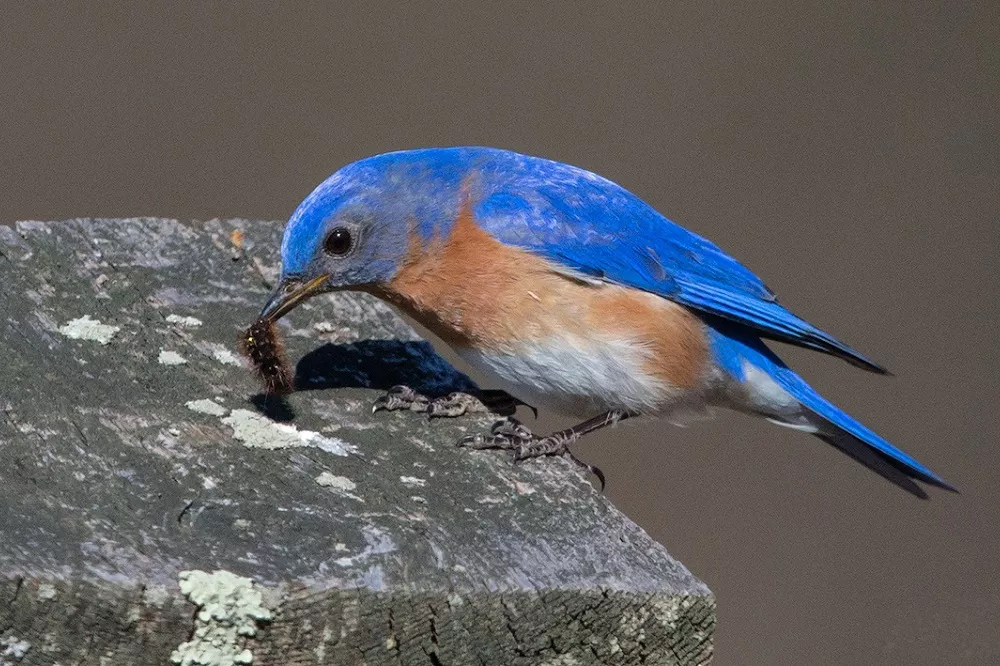Bluebirds, with their vibrant plumage and melodious songs, are a cherished sight for bird enthusiasts. If you’re interested in attracting these beautiful birds to your backyard, providing them with suitable nesting sites is essential. One crucial aspect to consider when installing a bluebird house is the direction it should face. Let’s explore the optimal orientation for a bluebird house to increase the chances of attracting these delightful avian residents.
Why Direction Matters
The direction that a bluebird house faces can have a significant impact on its overall success as a nesting site. For example, if a bluebird house is placed facing the wrong direction, it may be more vulnerable to predators or less attractive to bluebirds looking for a suitable nesting site. On the other hand, if the house is situated correctly, it can provide a safe haven that is both comfortable and attractive to bluebirds.
Ideal Orientation for a Bluebird House
The ideal orientation for a bluebird house is facing towards an open field or meadow. This is because bluebirds prefer to nest in areas with clear visibility, allowing them to easily spot predators and potential threats to their young. Additionally, bluebirds like to be able to swoop down from the entrance of their house and land on a nearby perch. By placing the house facing an open field, you give the birds the opportunity to do just that while keeping a watchful eye out for danger.
Another important factor to consider when orienting a bluebird house is the direction of the sun. Bluebirds prefer houses that receive morning sunlight, as this helps to warm up the house and promote healthy chick growth. Therefore, it’s best to place the house facing east or southeast to ensure it receives ample sunlight during the early hours of the day.
Orientation for Bluebird House Success
Facing east to southeast: The ideal direction for a bluebird house is generally east to southeast. Placing the entrance hole of the nest box in this direction offers several advantages. First, it allows the bluebirds to take advantage of the morning sunlight. Bluebirds are diurnal, meaning they are most active during the day. By facing the nest box towards the east or southeast, it ensures that the entrance receives warm morning sunlight, which is particularly beneficial during the cooler seasons. The sunlight helps warm the nest and provides an optimal environment for incubating eggs and raising young chicks.
Protection from the elements: Facing the bluebird house away from prevailing winds and storms is another crucial consideration. A south-facing orientation is generally avoided since it can expose the nest box to excessive heat during hot summer months. Additionally, a south-facing entrance may be vulnerable to harsh winds and heavy rain. By selecting an east to southeast direction, you provide some protection from strong winds while still allowing sufficient sunlight.
Predator deterrence: Placing the entrance hole away from potential predator perches can help deter predators from accessing the nest. Mounting the bluebird house on a pole or post with a predator guard can also enhance the safety of the nesting birds. By facing the entrance hole away from nearby trees, fences, or structures where predators like squirrels or cats could perch, you reduce the risk of nest predation.
Site-specific considerations: While an east to southeast direction is generally recommended, it’s important to consider the specific conditions of your location. Factors such as the layout of your property, the availability of suitable perching spots, and the presence of natural barriers or features can influence the ideal orientation of the bluebird house. Take into account the local climate, prevailing winds, and the existing bird habitat to make an informed decision.
Monitoring and adjustment: Once you’ve installed a bluebird house, it’s crucial to monitor it regularly. Observe the behavior of the birds and assess the success of nesting attempts. Bluebirds may reject a nest box if they feel it does not meet their requirements. If you notice that the house is not being used or that the bluebirds are showing disinterest, you can try adjusting the orientation slightly to see if it attracts their attention. It may take some experimentation to find the optimal direction for your specific location.
Avoid Facing Your Bluebird House Towards Busy Areas
While it may be tempting to place a bluebird house near your home or in a busy area of your backyard, it’s generally not recommended. Bluebirds are easily disturbed by human activity and noise, making it difficult for them to successfully nest. Instead, try to place the house in a quiet and secluded area where the birds can feel safe and undisturbed.
Consider Surrounding Vegetation
Another important factor to consider when orienting a bluebird house is the surrounding vegetation. Bluebirds prefer to nest in areas with short grasses and minimal shrubbery or trees. This allows them to better spot predators and other potential threats. Additionally, it makes it easier for the birds to fly in and out of their house without having to navigate around too many obstacles.
In conclusion, the direction that a bluebird house faces is an important consideration when trying to attract these beautiful birds to your backyard. By orienting the house towards an open field, facing east or southeast, and avoiding busy areas, you can create a safe and comfortable nesting site that is attractive to bluebirds. Additionally, keeping the surrounding vegetation minimal can also help to ensure the success of your bluebird house. With a little careful planning and consideration, you can create the perfect home for these lovely birds to thrive and flourish.
Related topics:
- What Does a Blue Bird Sound Like?
- How Long Do Bluebirds Live?
- What Size Hole For Bluebird House?


 Facebook
Facebook  Instagram
Instagram  Youtube
Youtube 